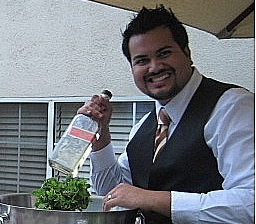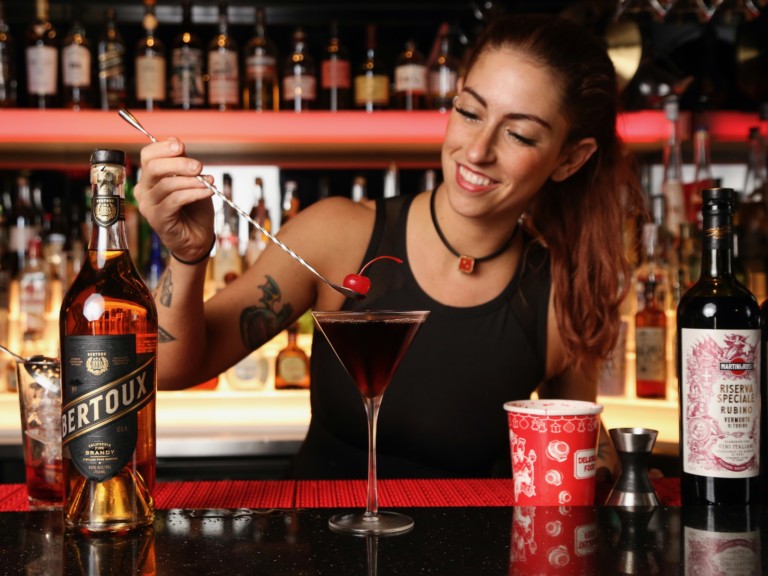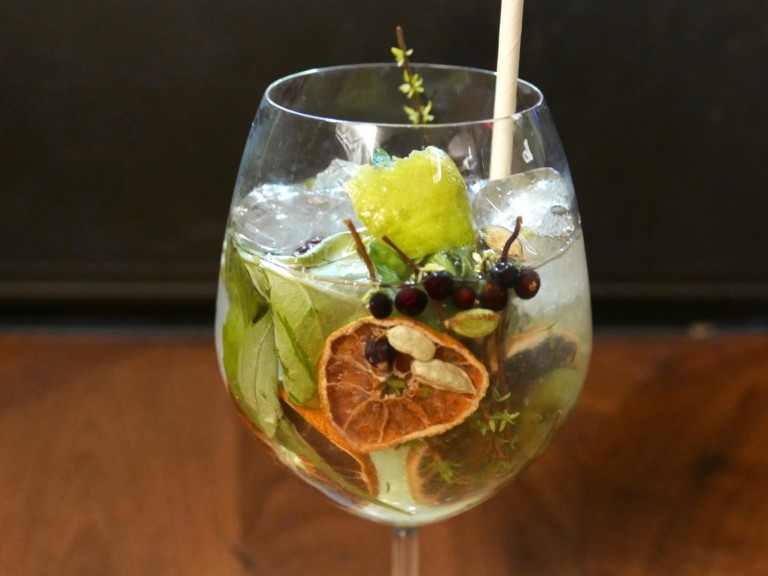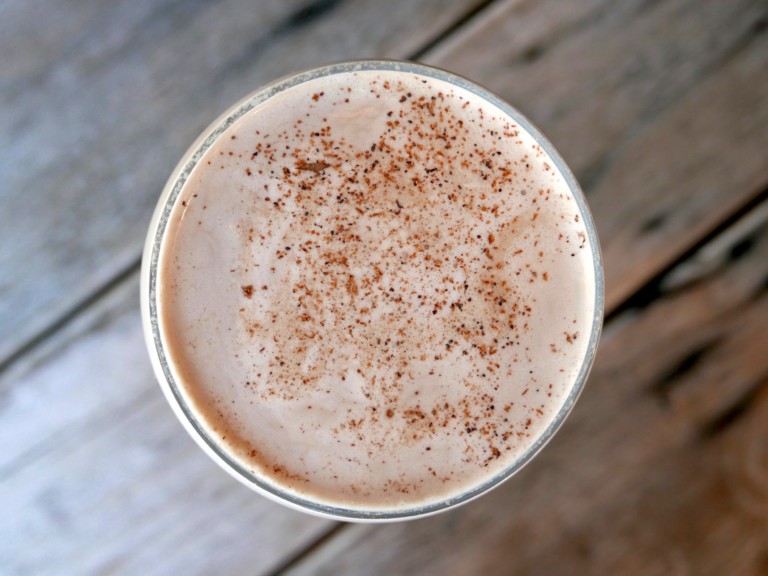Cocktail culture is thriving in large part due to a passionate contingent of exceptional bartenders and mixologists. This feature places a spotlight on the craftspeople behind the bar, and not just the structure itself. Meet Chris Ojeda, bartender at The Varnish and The Edison in downtown Los Angeles.
Do you consider yourself a bartender or a mixologist? What’s the difference?
Definitely a “Bartender”. When a chef is a master of their craft and considered one of the best in the business they are still considered a chef. Just like chefs, bartenders have their own skill level and passion about their craft. Dale DeGroff, one of the greatest barmen ever, coined the term “mixologists” to distinguish to the world he was serious and passionate about what he and a few others were doing at that time. Doing that he empowered others to become serious and passionate about what they are doing, restoring the profession of bartending.
How did you become interested in mixology?
I landed my first job in a restaurant at 20 and at this particular place you had to start at the bottom and work your up. I started bussing tables and quickly rose thru the ranks so I could attain the ultimate job as the bartender. I was putting myself through college at the time and extra money was always needed and being a bartender meant making the most money. So I approached the position like it was any old thing, just a means to an end. That’s until I actually stepped behind the bar on my first shift and got absolutely worked. It was a busy bar that served food too so I had to learn to juggle both for the first time. That was all I needed though I was hooked. Every time after that it didn’t feel like work. The bar to me was what a kitchen is to a chef a place for my creativity to come through and have fun doing it.
What’s your first cocktail memory?
Attending “Cocktails in the Country” with Gary Regan in NY. That trip opened my eyes in so many ways. Not only was it my first trip to NY but also I got to experience the bar from a perspective of seasoned veterans and a who’s who of the cocktail industry. We tasted every spirit, vermouth, liqueur and bitter behind the bar and this was all before lunch! That trip also coincided with my first visit to Milk and Honey and Pegu club, which were like getting to see Yankee Stadium for the first time. I can still remember how good the cocktails were that night.
What’s your current favorite spirit or liquor?
I love tequila; it is a very under-rated spirit to a lot of people. It’s great in margaritas and neat either for sipping or in a shot but the complexity the spirit brings to a cocktail is eye opening.
Which cocktail is past its prime?
The Apple Martini is dead and we should have a funeral for it and a party at my bar after. There are so many bars now in LA that are starting to go away from just your average martini menu and actually put out a cocktail menu that comprises of different ways drinks are served like: fizzes, juleps, sours, and cocktails.
What’s the cocktail of the future?
Bourbon is strong category that has recently seen a huge swing upwards and for people starting to rediscover some of the great bourbons out there a Bourbon Smash is a great drink. Smashes are a family of drink that comprise of a spirit, citrus, mint, and sugar. A great drink for both guys and girls.
Describe one of your original cocktails. What’s it called and what was your approach?
Fior di Sicily is the name of cocktail. After Eric Alperin left as bar manager of Osteria Mozza I was left with the reins of the cocktail program. We have a large selection of bitter amaro’s at Osteria Mozza and wanted to incorporate those amaro’s into cocktails so our guest would get a full flavor spectrum of regional Italian flavors. So I combined Averna amaro with St. Germain elderflower, Aperol, and Carpano Antinca sweet vermouth. I wanted to use flavors and combos that were European but also give the drink some structure. I finish the drink off with a flamed orange peel. The different flavors play off each other. The floral element of the St. Germain plays off the bitter orange of the Aperol and the acids in the sweet vermouth balance the herb flavors from the Averna.
Do you have a cocktail mentor, and what did they teach you?
I haven’t necessarily had a “mentor” but a group of people whom I respect that I turn to. I have studied under Gary Regan in NYC and that was my first education in spirit tasting and using complimentary ingredients that highlight the main spirit of your cocktail. More recently training with Eric Alperin and Sasha Petraske I learned the importance of temperature and ice in your cocktail.
Outside of your bar, what’s your favorite bar in town and why?
When I do get out I love to belly up to the bar Seven Grand, they have an amazing cocktail program their and all that bourbon how could not have a good time. One of the first to do classic cocktails in LA and the staff there is top notch.
Who’s another mixologist you respect and why?
I respect all my fellow LA bartenders but in particular Eric Alperin. He gave me my first real cocktail gig in LA and now being able to work for him at the newly opened Varnish has always been a career goal ever since my first visit to Milk n’ Honey NYC.
If you had a bar of your own, what would you call it?
Stay tuned…
What’s the best simple cocktail for people to make at home, and what’s the recipe?
A Daiquiri is a cocktail that is often overlooked. People associate this cocktail with some sort of fruit flavored slushy but in its classic form is a delicious drink and easy to make at home and for parties.
Daiquiri:
¾ oz. Simple syrup*
1oz Fresh Lime juice
2oz. Rum (Cruzan is great)
-Add above ingredients with ice and using your favorite cocktail shaker, shake vigorously for 8 seconds and strain into a chilled cocktail (martini) glass. Garnish with a lime wedge.
*Simple syrup – 1 part water and 1 part sugar heat over medium heat and stir till all sugar has dissolved and turn off and let cool.
Enjoy!









Leave a Comment